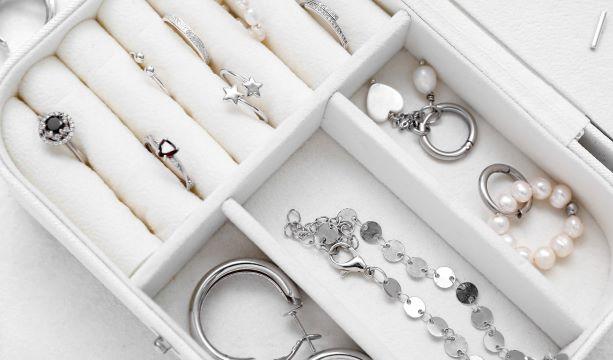Buying luxury jewelry is a thrilling experience—whether you’re investing in a timeless piece for yourself or gifting someone special. But, with excitement comes risk. Counterfeit pieces are becoming increasingly sophisticated, making it crucial to know what to look for before swiping your card. Nobody wants to spend their hard-earned money on something that only looks valuable.
This guide will walk you through the essential steps to determine if that dazzling necklace or pair of earrings is the real deal. Learn how to make confident purchases, avoid scams, and enjoy the elegance of true luxury jewelry.
Why Authenticity Matters
Authentic luxury jewelry goes beyond just looking good—it carries heritage, craftsmanship, and value. Fake pieces, in contrast, are often poorly made and worth far less than their supposed value. While a counterfeit may fool your friends from a distance, it won’t bring the satisfaction of knowing you own something truly exquisite.
Plus, spotting a fake isn’t just about aesthetics. You’re also protecting yourself against unethical practices like gemstone fraud or stolen designs, which are unfortunately common in the counterfeit world.
How to Spot Authentic Luxury Jewelry
1. Research the Brand and Seller
Before you make a purchase:
- Know the brand. Luxury jewelry brands like Cartier, Tiffany & Co., and Bulgari are known for their impeccable craftsmanship and attention to detail. Do some homework on how their authentic pieces are supposed to look and feel.
- Verify the seller. Buy from authorized retailers, well-known resellers, or directly from the brand’s store. If you’re shopping online, look for sellers with excellent reviews, a clear return policy, and a good reputation. Avoid deals that seem too good to be true—they probably are.
For example, if that $10,000 diamond bracelet is being sold online for just $500, it’s not a “lucky find.” It’s likely a fake.
2. Examine the Craftsmanship
Luxury jewelry is all about the details. Pay close attention to:
- Precision: Authentic pieces are crafted with extreme care. Smooth edges, perfectly set stones, and symmetrical designs are telltale signs of quality.
- Weight: Genuine luxury jewelry often feels heavier because it’s made with premium metals like gold or platinum. Counterfeits typically feel light due to cheaper materials.
- Hallmarks and Stamps: Look for engraved hallmarks or stamps indicating the type of metal (e.g., “14K,” “.925,” or “Platinum”) and the brand’s logo. These should be clean and legible, not smudged or uneven.
3. Analyze the Materials
Luxury jewelry uses superior-quality materials, while counterfeit items cut corners:
- Gold and Silver: Authentic gold or silver will not tarnish easily and feels soft to the touch. Fake jewelry may have a plated finish that fades quickly.
- Gemstones: Diamonds and genuine gemstones reflect light beautifully. Use a jeweler’s loupe or magnifying glass if you can. Synthetic stones often look too “perfect” and lack the brilliance of natural ones.
- Pave or Stone Setting: Check how the stones are set. Luxury jewelers use prongs or bezels to secure gems, whereas counterfeits often glue them on.
4. Request a Certificate of Authenticity
Reputable luxury jewelry brands provide certificates of authenticity, particularly for higher-priced pieces. These certificates include key details like the origin of materials, carat weight, and the piece’s unique identifiers, which may be marked through intricate processes like the use of an engraving tool. If the seller can’t or won’t provide this, walk away.
When in doubt about a certificate’s validity, consider reaching out to the brand directly to verify.
5. Compare Prices
Use pricing as context, but not your only deciding factor. Authentic luxury jewelry comes with a premium price tag. While discounts are possible (especially from authorized dealers or during sales), a dramatic price drop is a major red flag.
Here’s a quick guide:
- Typical discounts for luxury jewelry are around 10–20% at trusted resellers.
- Discounts of 50–70% are rare and almost always indicate something’s off.
6. Seek Professional Help
If you’re still unsure, bring the item to a professional jeweler or appraiser. They can:
- Use specialized equipment to detect fake materials.
- Evaluate gemstones and metals down to the microscopic level.
- Offer advice on whether the piece is truly a smart investment.
It’s worth spending a little extra to know you’re getting the real thing.
Warning Signs of Fake Luxury Jewelry
Here are some red flags to watch out for:
- No Documentation: If the seller has no receipt, certificates, or paperwork, proceed with caution.
- Poor Packaging: Luxury brands spend as much effort on their packaging as their products. If the box looks cheap or lacks branding, it may not be genuine.
- Overseas Sellers Without Reviews: Be wary of unknown international sellers with no customer reviews or guarantees.
- Pressure to Pay Quickly: Scammers often create urgency by offering “exclusive deals” that require payment within minutes or hours.
Why the Right Knowledge is Empowering
Spotting authentic luxury jewelry isn’t just about avoiding fakes—it’s about appreciating the skill, artistry, and legacy behind each piece. Knowing you’ve invested in something truly valuable creates a deeper connection to your purchase. Plus, it means you’re much more likely to cherish and take care of it in the years ahead.
Protect Yourself and Your Purchase
To recap, here’s how you can confidently shop for luxury jewelry:
- Do thorough research on the brand and seller.
- Pay attention to craftsmanship and details.
- Analyze the quality of materials.
- Always request a certificate of authenticity.
- Stay cautious if the deal feels too good to be true.
- Seek expert advice when necessary.
Make buying luxury jewelry an experience full of excitement and confidence—not second-guessing and regret. Take your time, do your homework, and don’t be afraid to ask questions.
Whether you’re a seasoned collector or new to the world of fine jewelry, understanding these tips will help you make informed choices and truly celebrate the beauty of authentic craftsmanship.
